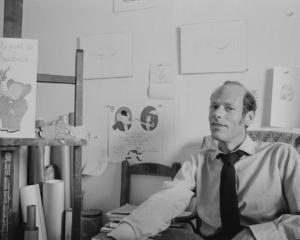
Tim Corballis is a Wellington-based writer of short fiction, essays and creative writing, and writer in residence at Victoria University.
His research interests include aesthetic theory, on which he wrote his doctorate, and this focus informs his latest work, two novellas, under the umbrella title R. H. I.
Corballis talks about writing a history of the 20th century through ''lens upon lens'' in this piece of experimental fiction.
The first novella turns the lens on Joan Riviere, an early British psychoanalyst, as a present-day researcher rifles amongst her diary entries, writings and other ephemera in the British Psychoanalytic Society's archive in London.
This researcher ponders Riviere's motivations, interpreting of his own will, including historical sound bites and encounters with Freud, Ernest Jones and other instigators in this then-innovative field.
The first novella throws together various written and spoken voices from dispersed timeframes in a purposefully chaotic mixture, boldly claiming to replicate something of the ''mess we encounter in ourselves''.
This chaos works up to a point, and the author drenches this novella in psychoanalytic interpretations, whimsically, and playfully; but the authorial voice evades, leaving the reader a bit lost.
It is unclear whether his attitude towards psychoanalysis is parody or pastiche or something other entirely for the tone is rather odd.
The second novella, standing likewise as a distinct unit, approaches history from the exterior rather than the interior, for it concerns German architect Hermann Henselmann and his significant contributions to rebuilding post-war city landscapes.
It is set in Berlin and we encounter a grotesque merging of the new Russian communist presence with the dregs of German fascism, and the violence and the visceral that accompanies this.
There are vivid images: the ''sound-memory of the knife's clatter'' and featureless, broken grey streets which Henselmann hopes to turn into ''thinking-spaces as light as thought''.
The reader must work to follow the avant-garde forms hurtling from one mode of narration and focus to another.
While this is at times fairly frustrating, Corballis' reconstructions of time, historical events, voices and possible realities leave the reader with two personal accounts of how internal and external states of past, present and future shape and interpret each other.
• Jessie Neilson is a University of Otago library assistant.











